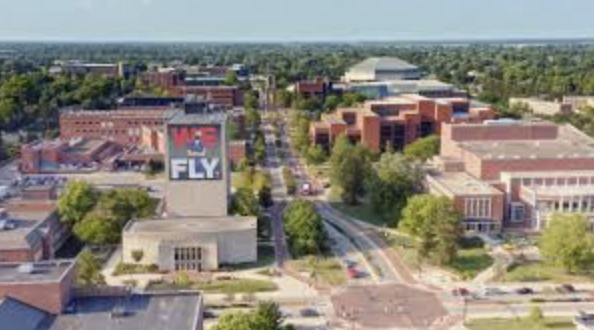
This will be my last post for three weeks as I am taking a vacation, back at the beginning of June.
I am writing an autobiography, mainly for my family, but it does cover some key moments in the development of open and online learning. I thought I would share these as there seems to be a growing interest in the history of educational technology.
Note that these posts are NOT meant to be deeply researched historical accounts, but how I saw and encountered developments in my personal life. If you were around at the time of these developments and would like to offer comments or a different view, please use the comment box at the end of each post. (There is already a conversation track on my LinkedIn site and on X). A full list of the posts to date will be found toward the end of this post.
Educational technology policy research in the USA
Not long after I joined UBC, I was approached by Jim Mingle, the Secretary of SHEEO, the State Higher Education Executive Officers’ Association. The state higher education executive officer is the most senior person charged with guiding postsecondary education public policy in their state. SHEEO was the umbrella organisation (or club) for these executive officers.
SHEEO was wanting to facilitate policies that would enable the integration and use of information technologies for teaching and learning in state higher education institutions (universities and community colleges) across the USA. Some of the states wanted assistance in reviewing how some of the institutions in their state were approaching the use of information technologies for teaching and learning, the state-wide policies needed, and the role state co-ordinating boards should take on this issue.
It should be noted that in the 1990s many states had multi-campus universities and colleges spread across different parts of the state, and some, such as Indiana, had statewide information technology networks. Also the growth in distance education was presenting a challenge to traditional local boundaries, with students in one part of a state able to take programs from an institution outside the traditional catchment area of the student – or even from another state. Furthermore, the introduction of the Internet and the World Wide Web allowed students to access programs from their own homes and some saw this as raising questions about a collaborative approach to state-wide information technology services.
Jim and I were tasked with interviewing key ‘players’ in selected states, and making recommendations to the state’s higher education executive or board. As well as representatives from the local higher education commission, we also visited individual universities and colleges in the state and interviewed senior administrators and faculty.
What’s the shortest route from Ankara, Turkey to Muncie, Indiana?
On one occasion, in 1998, I was a keynote speaker in Ankara, Turkey, at conference organised by the Anadolou Open University of Turkey. The conference ended on a Friday, and I had to be at Ball State University in Muncie, Indiana, for 10.00 am on the following Monday, to give a lecture to the faculty and administration, to be followed with interviews with various faculty and staff. I was scheduled to fly on the Saturday from Ankara to Istanbul, then Istanbul to Washington DC, where I would connect with a flight to Indianapolis. I would stay overnight and rent a car at Indianapolis airport, and drive to Muncie on the Sunday.
I made my connection in Istanbul, but five minutes into the Turkish Airlines flight from Istanbul, the cabin lights went out and the plane started shaking. An announcement was made that the plane was having mechanical problems and was returning to Istanbul. There was a major panic among the mainly Turkish passengers. The woman sitting next to me grabbed my arm and started shouting ‘We are all going to die!’
However, we were not. The plane safely landed in Istanbul, but the flight was cancelled. I joined the long line at the Turkish Airlines desk. There were no further Turkish Airlines flights to Washington for several days, but they could get me to London on Sunday, where I could connect with a British Airways flight to Washington DC. I made my connection in London, and arrived in Washington DC a day later than planned, then flew to Indianapolis on the last flight on Sunday. I found a hotel at the airport and rented a car early the next morning to drive to Muncie, where I arrived at 9.30 am. I found the conference room and checked in at the desk.
‘Oh, Dr. Bates, we were expecting you yesterday. Have you come far?
‘Actually, yes – I’ve come straight from Ankara, Turkey.’
‘Oh, you must have taken the Air Force transport plane.’
‘The Air Force transport plane?’
‘Yes, there’s a daily direct US Air Force flight from the NATO base near Ankara to the Grissom Air Reserve base just outside town. You could have got a lift.’ Who knew?
Jim arrived immediately afterwards.
‘Where the hell have you been?’ he said. ‘I was expecting you yesterday – you’re on in 15 minutes. Are you ready?’
‘Of course,’ I said, getting out my floppy disc. ‘Where’s the conference technician?’
Identifying institutional best practices in faculty development for teaching with technology
In a period between 1997 and 1998, I travelled to California, Maine, Indiana, Virginia, Oklahoma and Florida with Jim Mingle. Jim, with his extensive knowledge of the higher education systems in the USA, and a deep understanding of the politics of state higher education systems, was a wonderful mentor to me, and it was a great way for me to learn about the complexities and uniqueness of the American higher education system. It also got me to exciting places such as Gary, Indiana; Blacksburg, Virginia; Augusta, Maine; Norman, Oklahoma, as well as Muncie. (Do I have a motel for you!)
One outcome of my work with SHEEO was a book co-edited with Rhonda Epper, a project director at SHEEO at the time, titled ‘Teaching Faculty How to Use Technology,’ published in 2001. This drew on a study between the American Productivity and Quality Centre and SHEEO. The project used a combination of institutional surveys, site visits, and a conference where best practices in faculty development for using learning technologies were shared. Through this process, the study identified best practice cases. These included the University of Central Florida, Virginia Tech, California State University, Bellevue Community College (Seattle), and Collège Boréal in Sudbury, Ontario. It was one of the first books to identify best practices in faculty development for teaching with technology.
Up next
Not sure yet, but sooner rather than later I will be covering work in Australia and New Zealand, where I was when 9/11 happened, and having my computer stolen (again), this time by suspected terrorists in, of all places, Montreal.
I will also thereafter be covering my last few years at UBC and why they fired me. Writing about this will be painful for me but fun for you (Schadenfreude). I’ll talk to you again in June.
Reference
Epper, R. and Bates, A. (2001) Teaching Faculty How to Use Technology: Best Practices from Leading Institutions Westport CT: American Council on Education/Oryx Press
Previous posts in this series
Here is a list of the posts to date in this series:
A personal history: 1. The start of the Open University
A personal history: 2. Researching the BBC/Open University broadcasts
A personal history: 3. What I learned from Open University summer schools
A personal history: 5. India and educational satellite TV
A personal history: 6. Satellite TV in Europe and lessons from the 1980s
A personal history: 7. Distance education in Canada in 1982
A personal history: 8. The start of the digital revolution
A personal history: 9. The Northern Ireland Troubles and bun hurling at Lakehead University
A personal history: 10. Why I emigrated to Canada
A personal history: 11. The creation of the OLA
A personal history: 12. My first two years at the Open Learning Agency
A personal history: 13. OLA and international distance education, 1990-1993
A personal history: 14. Strategic planning, nuclear weapons and the OLA
A personal history: 15. How technology changed distance education in the mid 1990s
A personal history: 16. NAFTA, video-conferencing and getting lost in Texas
A personal history: 17. Innovation in distance education at UBC
A personal history: 18. Developing the first online programs at UBC – and in Mexico
A personal history: 19. Some reflections on research into the costs and benefits of online learning









 Dr. Tony Bates is the author of eleven books in the field of online learning and distance education. He has provided consulting services specializing in training in the planning and management of online learning and distance education, working with over 40 organizations in 25 countries. Tony is a Research Associate with Contact North | Contact Nord, Ontario’s Distance Education & Training Network.
Dr. Tony Bates is the author of eleven books in the field of online learning and distance education. He has provided consulting services specializing in training in the planning and management of online learning and distance education, working with over 40 organizations in 25 countries. Tony is a Research Associate with Contact North | Contact Nord, Ontario’s Distance Education & Training Network.


Are there specific training methods or strategies they recommend for ensuring faculty are not only comfortable with the tools but are also able to integrate them effectively into their teaching? This aspect seems crucial for making educational technology truly impactful in the classroom. Visit us Telkom University Jakarta
Hi, Khairun
Thank you for your question
Yes, this questions is directly addressed in the book Epper, R. and Bates, A. (2001) Teaching Faculty How to Use Technology: Best Practices from Leading Institutions Westport CT: American Council on Education/Oryx Press. There are examples in each of the case studies, and the final chapter pulls together the main themes, but the main strategy is the use of instructional design and a team approach to course design, so that the use of technology is embedded in the design of courses and programs, combined with specific training for faculty on the use of a particular technology so that they feel comfortable using it.